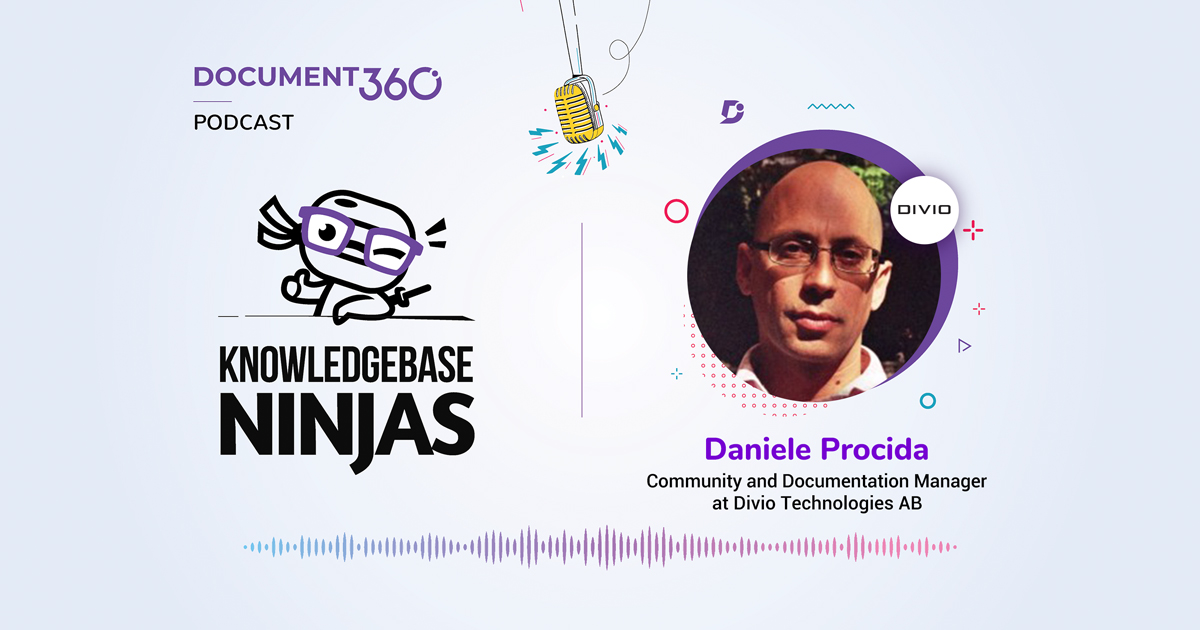Christopher Gales, Senior Director of Documentation at Splunk joins us in this episode of Knowledgebase Ninjas to discuss how to put your audience first when creating documents.
Connect with Christopher Gales and Splunk here:
Key Takeaways:
How did Chris get into documentation?
Chris’s journey into documentation started when he was at university. He was working on an archival research project and they had a database for all the historical documents that they were collecting and producing editions of. He worked very closely with the historians and produced documents for them on how to use the database when he finished his degree.
After finishing his degree, Chris joined a financial software startup where he was the second technical writer to join their team. He learned all the basics of the trade through the other technical writer at the company.
Splunk’s documentation process…
Chris brilliantly explains how their documentation process works. His writers are embedded within the product development teams providing a fully cross-functional team of engineers, product managers, program managers, designers, and writers.
His team usually works alongside the development team within the Scrum process. Chris’s team also produces documentation for end to end tutorials or workflows which span the output of multiple and multiple sprint cycles within Splunk.
Important factors when creating documentation…
Putting the audience first is key! As Splunk has grown over the past few years they have been pivoting more into the SaaS space. Splunk had to embrace the frequent change and they found that the nature of software development for SaaS was more dynamic and agile. Being able to streamline your processes to align with the development teams’ workflows is important.
Chris explains how Splunk is putting the customer first, this is through improving published materials based upon the customer feedback. Chris’s team is currently working alongside development for new features and capabilities for products and services. Being active community members and responding to customer feedback is another important part of putting the customer first.
What changes has Chris seen in documentation during his 25 year career?
The way people are able to search for information, find and consume it and the interaction they expect to have with content and each other has been the obvious change over the past 25 years.
Documentation teams have had to become more open especially within the software world; companies 10 to 15 years ago were moving away from the book model, moving into topic-based authoring and structured environments using component-based management systems.
Chris furthers this by saying that whilst this is happening, the model is still very much factory centric. Meanwhile, online communities, forums, and the level of community participation on the web had exploded.
Customers expect to have a voice within the documentation and companies have to wake up and recognise that they are just one player in a broader community conversation about their product. The open-source model is the logical extension of this trend we see today.
Without open-sourcing documentation, companies have to recognise and contend with the fact that they aren’t the only source of information about their products and they might not even be the most trustworthy source in some cases.
Chris’s #1 documentation related resource
Chris highly recommends the Write The Docs – Slack
Subscribe To Knowledgebase Ninjas:



 –
– 

